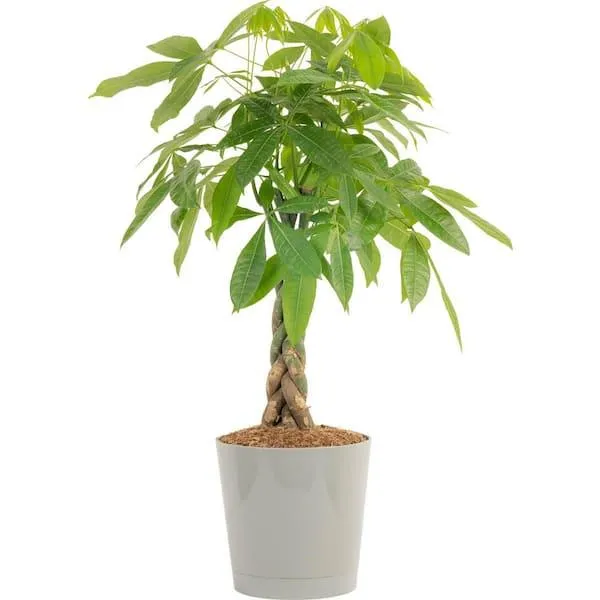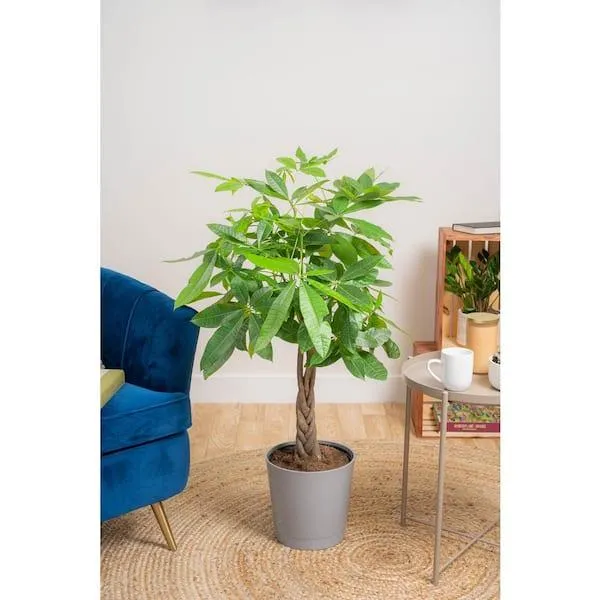Is Pachira Aquatica Toxic to Cats?
As any pet owner knows, keeping our furry friends safe and healthy is one of our top priorities. If you have a cat and an indoor plant like pachira aquatica (also known as the money tree or Malabar chestnut), you may be wondering – is this plant toxic to cats? In this article, I’ll give a thorough overview of pachira aquatica toxicity risk for cats based on scientific research and my own experiences as a longtime cat guardian.
Background on Pachira Aquatica
Pachira aquatica is a popular houseplant with its unusual balloon-like roots and broad, palm-like leaves. Native to Central and South America, it thrives in moisture and tolerates low to medium light conditions indoors. Its hardy nature and lush appearance make it a great choice for beginning plant parents. However, many plants that appear harmless can potentially be dangerous if ingested by pets.
According to the ASPCA’s poison control database, all parts of the pachira aquatica plant are considered moderately toxic to cats if eaten. The main toxic components are saponins, which can cause vomiting and diarrhea when consumed. While fatalities are rare, some cats may experience more severe symptoms like drooling, loss of appetite, or abdominal pain after chewing on or swallowing leaves, seeds, or roots from a money tree.
My Experience with an Ingestion Scare
I can personally attest to the risks, as I once had a scare with one of my cats named Mittens. One morning I noticed her acting strangely lethargic and not her usual playful self. Upon inspecting, I saw she had gnawed on a fallen leaf of my pachira aquatica plant that was kept on a low table. Thankfully, after force-feeding her some hydrating Pedialyte and monitoring her closely, Mittens’ symptoms improved within a day with no veterinary treatment needed. But it was definitely a stressful reminder of how seemingly harmless plants can be problematic for curious kitties.

Safety Tips for Cat Guardians
So in summary – while pachira aquatica toxicity may not be super severe in most cases, it’s still best to consider this plant as a moderate risk for cats. Here are some tips I recommend to help keep your money tree and curious cat safe:
- Place the plant in an inaccessible area up high or behind a baby gate. Out of sight is out of mind (and mouth) for most cats.
- Consider potting the plant in a container with weighted bottom to prevent it from being knocked over and leaves/roots from being accessible on the floor.
- Trim away any dropping or fallen leaves/pieces immediately and be vigilant for any signs your cat may have chewed or ingested even a small fragment.
- Always have your vet’s contact info handy just in case, as any plant ingestion may require medical monitoring depending on the amount and your cat’s individual tolerance.
Following these common sense precautions should significantly reduce the risk of toxicity from this popular decorative plant. But the safest approach is always to choose non-toxic pet-safe greenery if possible when feline friends are part of the household. As the old saying goes – better safe than sorry where our pets’ well-being is concerned!
Alternatives to Consider
Luckily, there are many gorgeous houseplants that pose no danger at all to curious cats. Here are some lovely low-risk options to substitute for money trees around furry friends:
- Spider plant – tough as nails and cats tend to avoid the mild spider-like fibers on the leaves.
- Boston fern – lush deep green fronds and zero toxicity if accidentally nibbled.
- Peace lily – striking white blooms and leaves are tasteless if sampled.
- Snake plant – stylish vertical stripes and completely nontoxic for cats to chew or lick.
- Pothos – easy to care for trailing vines that are perfectly pet-proof.
So in summary, while pachira aquatica may look amazing, safer choices abound for maintaining a beautiful indoor jungle that won’t endanger curious kitty companions. Play it safe by avoiding potentially toxic plants and your furry family will stay happy and healthy.

Final Thoughts
I hope this overview helped provide understanding around the potential toxicity risks of money trees for cats. In my experience, it’s always better to err on the side of caution where pets are involved. While pachira aquatica dangers may be mild in many cases, the stresses of a veterinary visit or unknown long-term issues simply aren’t worth it when there are so many truly nontoxic options for indoor greenery. Most of all, prioritizing pet-proofing our homes helps ensure furry friends can remain safely by our sides for many joyful years to come.
Do you have any other questions after reading this article? Please feel free to ask – I’m always glad to help concerned pet owners find the best solutions. With a little research and responsible plant selection, it’s definitely possible to keep both our feline buddies and our decorating dreams fully satisfied. Safe plant parenting is the name of the game!
Pachira aquatica Toxicity to Cats
| Common Name | Toxic Parts | Toxic Effects |
|---|---|---|
| Money tree | All parts | Vomiting, diarrhea, weakness, lethargy |
| Malabar chestnut | Leaves, seeds | Mouth irritation, drooling, difficulty swallowing |
| Saba nut tree | Seeds, bark | Jaw spasms, excessive drooling, vomiting |
| Guiana chestnut | Seeds, bark | Mouth pain, difficulty swallowing, vomiting, diarrhea |
| Petersian nut | Seeds | Drooling, vomiting, weakness, lethargy |
FAQ
-
Is the pachira aquatica plant toxic to cats?
Yeah, the pachira aquatica plant, also known as the money tree, is basically not safe for kitties. Most parts of the plant contain chemicals that can make felines sick if they eat it.
-
What are the symptoms if a cat ingests the pachira aquatica?
If little whiskers chomps down on a money tree, they may start drooling a lot and get an upset tummy. Vommiting, diarrhea, and lack of appetite are also possible. I’d take them to the vet just to be safe!

-
How toxic is it?
The toxicity can vary a lot from kitty to kitty. For some, ingesting a small bite results in mild diarrhea. But others might need medical treatment. It contains calcium oxalate crystals that can potentially damage their kidneys over time with repeated ingestion. Yikes!
-
Is there a risk even from small amounts?
It appears that small nibbles of the plant are unlikely to cause serious problems on their own. However, the toxicity appears to escalate with larger doses. Repeated minor ingestions over many weeks could possibly lead to health issues down the road. I’d play it safe and keep these trees out of paws’ reach just to be sure.
-
How can I treat a cat if it eats the plant?
If you catch whiskers chowing down, you’ll want to induce vomiting right away if possible. Call the vet or animal poison control for instructions. Symptoms like vomiting or diarrhea in the following days should be monitored. Bad tummy upset may require fluid therapy. Hopefully it’ll pass on its own, but the vet can monitor kidney function as a precaution with bloodwork.
-
Are there safer alternative houseplants?
Yeah, there are lots of other awesome plants which are pet-friendly. Spider plants, english ivy, peace lilies and bamboo are less likely to cause issues if kitty mistakes them for a salad bar. Maybe go with one of those instead of a money tree to save yourself the worry. Your furry buddy’s health isn’t worth gambling on!

-
In summary, how can I pet-proof my home with houseplants?
Overall, the best way is to identify plants toxic to pets and toss or relocate those guys. Keep an eye out for any leaves or stems they could munch when playing or exploring. Consider safe plants instead, and make sure all are out of little paws’ reach by at least six inches above the floor. With some prep, your plants and pets can live in harmony!
